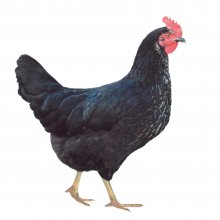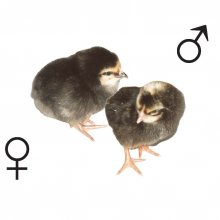DOMINANT BLACK D 149 is originally attractively coloured, where the black shiny feathers on the body is complemented by a silver marking on the neck and chest, and resembles the so-called birch marking of some historic chicken breeds. It is used as a final hybrid for self-sufficient farms in the Czech Republic and in many other European countries.
Owing to its attractive colouring, it is also used in the export of parent breeding pairs to Africa, Asia and Latin America for the production of eggs in self-sufficient family farms. Capons are used to produce traditional, highly delicious poultry meat.
The asset is the high productivity, namely laying around 300 eggs. Brown eggshell colour is characteristic. Laying hens have attractive shiny, black feathers with the neck and chest feathers having silver marking. The cockerel is barred with silver feathers on the neck, chest and wings.
This program is the result of cross breeding Sussex (SU) paternal population and maternal barred population (BPR). Colour sexing is applied when hatching one-day-old chickens using the "B" allele of the Barred gene, where one-day-old cockerel acquires the dominant allele of this gene from the mother and is barred with a white dot on its head and one-day-old hen acquires the recessive "b" allele from the father, which does not cause barred marking, and consequently the hen is dark without white marking on her head.






















